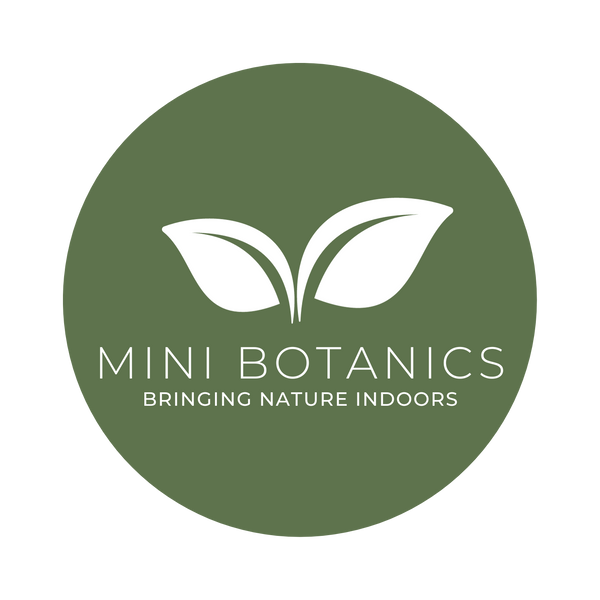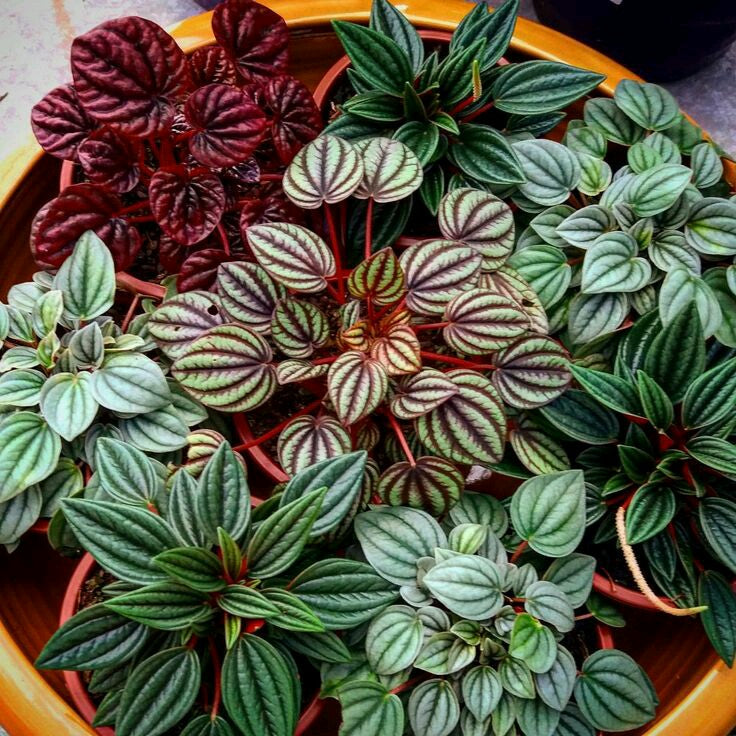When creating a closed terrarium, it is essential to carefully select the right plants to ensure their survival in the enclosed environment. One of the things I hear terrarium builders saying they find difficult, is actually finding baby plants. I agree, it can be really difficult finding them small enough for a terrarium.
I have added a few varieties of baby plants to my website (and more coming) that are my favourite go-tos and readily available. There you will also find everything you need to create your terrarium; vessels, DIY Kits, tools, accessories and plants.
Here are some popular plant options that are ideal for closed terrariums and available in New Zealand:
Fittonia (Nerve Plant):
My favourite of all! The Fittonia is known for its vibrant and colorful foliage, making it an excellent choice for adding a pop of color to your terrarium. It grows easily from cuttings placed directly into the terrarium soil mix.

Syngonium Pixie (Micro):
This compact variety of Syngonium Pixie is perfect for small terrariums. Its miniature arrow-shaped leaves in a muddle of greens remain small, unlike the larger varieties.

Pilea Cadierei:
Thanks to its low-growing habit, stunning foliage, and easy-care requirements, it’s an ideal plant for terrariums. You may know it by its more common name, the Aluminum Plant, or Aluminum Pilea. With it’s beautiful silver variegation splashed across the green leaves the Pilea Cadierei provides a striking contrast for your terrarium.

Pilea (Chinese money plant):
Features round, coin-like leaves that add visual interest to your terrarium. It thrives in bright, indirect light and well-draining soil. This species can grow fairly quickly in a terrarium environment, but is easily kept in check with occasional pruning.

Polka Dot Plant:
The Polka Dot Plant showcases striking pink or red splashes on its leaves, making it an eye-catching addition to any terrarium. It thrives in medium to bright indirect light conditions.

Creeping Fig:
Creeping Fig is a versatile vine that can be trained along the walls or allowed to cascade down within your closed terrarium setup. It prefers bright indirect light and high humidity levels.

Strawberry Begonia:
Despite its name, Strawberry Begonia is not actually a begonia but belongs to the Saxifraga family. It features heart-shaped leaves with silver markings on top and deep red undersides. Mature plants send out long stolons, threadlike runners with little baby plants growing at the tips.

Begonia:
Begonias come in various shapes, sizes, and colors, making them an excellent choice for closed terrariums. They prefer bright, indirect light and high humidity levels.

Prayer Plant (Maranta leuconeura):
Known for its beautiful foliage patterns, the Prayer Plant folds its leaves in the evening, giving it a unique characteristic. Ideal for larger terrariums, it thrives in medium to bright indirect light and loves the high humidity.

African Violet:
African Violets are compact plants that produce clusters of small colorful flowers above their fuzzy leaves. The African Violet can create a nice feature of your terrarium.

Jewel Orchid:
Jewel Orchids are prized for their stunning patterned foliage and delicate miniature flowers. They thrive in the high humidity levels of a terrarium. They do require more oxygen than most tropical plants, so it is necessary to remove the lid every couple of weeks for an hour or two.

Rabbit's Foot Fern:
This Rabbit's Foot Fern gets its name from the furry rhizomes that resemble rabbit's feet. It requires moderate to bright indirect light and thrives in the high humidity environment of a terrarium.

Bird's Nest Fern:
Bird's Nest Fern has wavy, glossy fronds that resemble a bird's nest, hence its name. It prefers medium to bright indirect light and requires high humidity levels.

Leatherleaf Fern:
The Leatherleaf Fern features leathery dark green fronds that add texture to your terrarium. It can tolerate lower light conditions but still requires moderate humidity levels.

Maidenhair Fern:
Maidenhair ferns known for their frilly leaves and flowing fronds are ideal for enclosed environments such as terrariums. Closely mimicking their natural habitat found near shady streams. a terrarium creates the perfect humid and shaded conditions that they thrive in.

Baby Tears:
Although quite fragile to plant, once settled into it’s terrarium environment, this plant with thrive and grow quite fast. A trim now and again will keep it from taking over your other terrarium plants.

Peperomia Varieties:
Moonlight, Frost, Silver Ripple, Emerald Ripple, Burgundy, Rosso are just some of the many varieties with different colours and textures. Compact and suited to growing in a terrarium, they like moderate light and prefer moist soil but don't like to be overwatered. This species can grow fairly quickly in a terrarium environment, but is easily kept in check with occasional pruning.

Peperomia Parallel:
A beautiful peperomia with small, pointed, oval leaves which are mid to dark green with creamy light-green veins, which resemble watermelon skin. Four leaves are produced at each node creating a nice floral effect. Its growth is mainly upright but will trail over gently once the stems grow longer. Requires bright indirect light and medium/high humidity making it ideal for a closed terrarium. Perfect for a taller or larger vessel.

Peperomia Dahlstedtii:
This cascading peperomia features textured elongated leaves with a glossy appearance. Very hardy and enjoys minimal water as the leaves are not dissimilar to succulents. Requires bright indirect light and medium/high humidity making it ideal for a closed terrarium.

Peperomia Scandens Variagated:
Compact, tropical, evergreen with highly decorative heart-shaped foliage and a trailing habit. Leaves are bright green with thin creamy yellow edging. Requires bright indirect light and medium/high humidity making it ideal for a closed terrarium, but more so a larger sized one.

String of Turtles (Peperomia Prostrata):
Despite its semi-succulent inclinations, Peperomia Prostrata is a surprisingly versatile tropical plant and a common feature in terrariums. The String of Turtles loves the moisture and humidity of a terrarium and looks amazing trailing down rock features.

Most plants mentioned here would need to be purchased as babies, not mature plants. Remember to consider factors such as lighting requirements, humidity preferences, and growth habits when selecting plants for your closed terrarium. By choosing the right combination of plants, you can create a visually appealing and thriving miniature ecosystem within your terrarium space.

